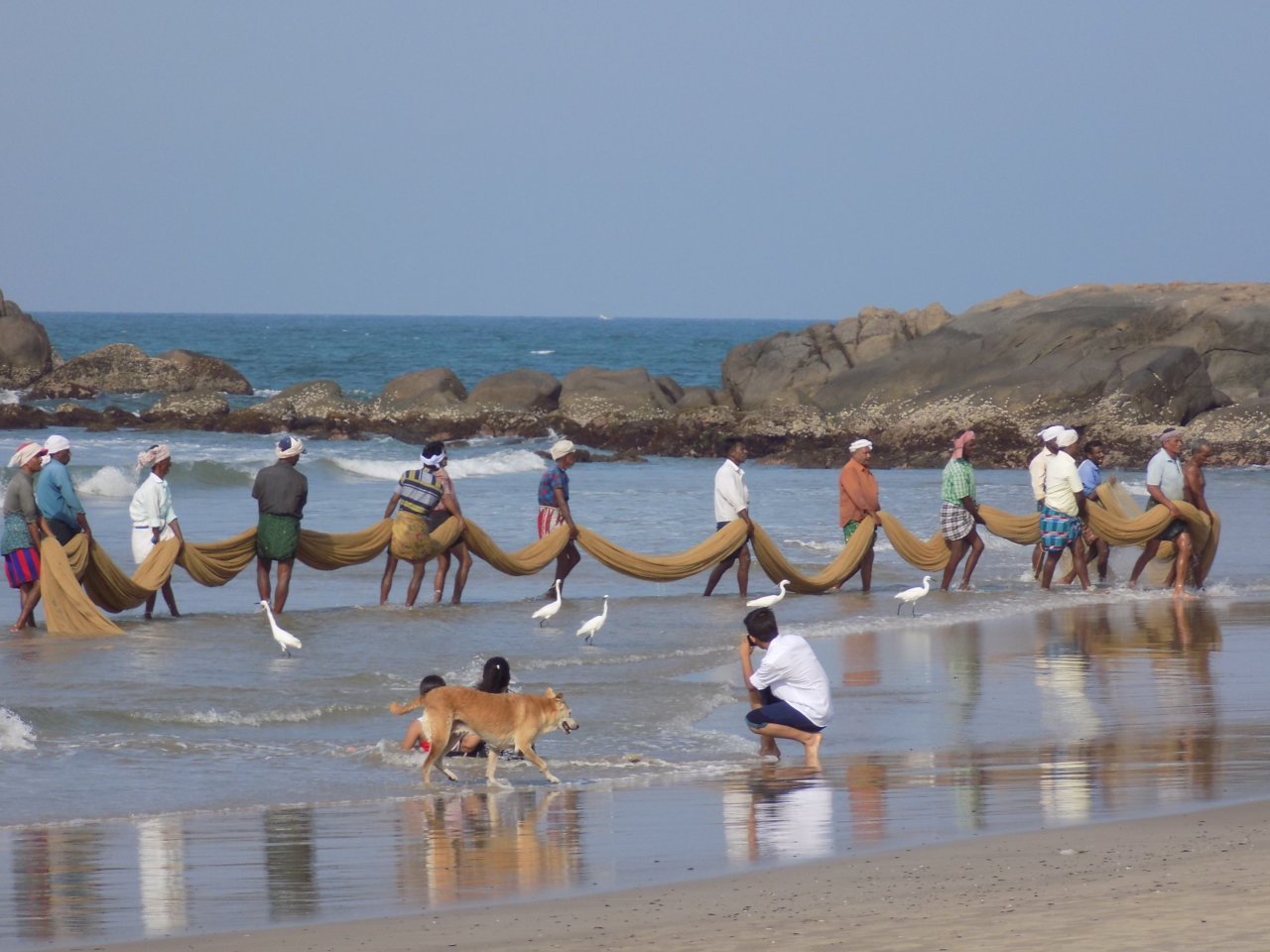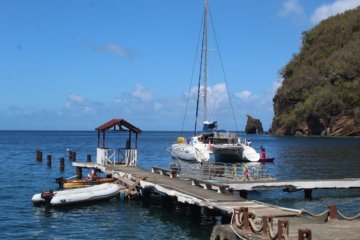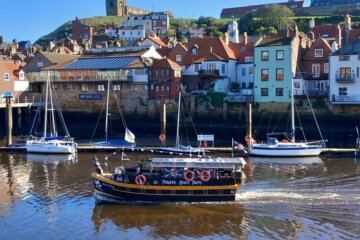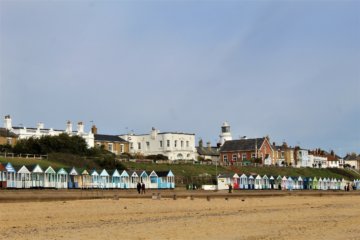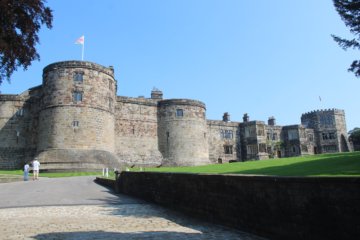Welcome to my article on the best things to do on the Isle of Wight. Read on for ideas and inspiration if you are visiting this diverse British island.
In this article
First Thoughts
The Isle of Wight is a diamond-shaped island off the south coast of England. It is separated from the county of Hampshire by a stretch of water known as the Solent. Some say that when you cross the Solent, you step back in time by about 50 years to the UK of yesteryear – a gentler time with a much slower pace of life, a time when strangers said hello as they passed on the street, a time when we shopped locally, a time when we stopped to appreciate our surroundings. Whether or not this is strictly true, the Isle of Wight does feel like a different country.
The island has long attracted poets, writers, and artists. Alfred, Lord Tennyson settled there. Many of the impressionist painters, including Eugene Manet and Berthe Moriset, visited. Charles Dickens wrote much of David Copperfield on the island. When Queen Victoria made Osborne House her summer residence, the Isle of Wight became a fashionable holiday destination. With its mild climate, stunning coastal scenery, chocolate-box villages, glorious beaches, and fascinating history, it’s not difficult to understand why.
For us, the Isle of Wight holds a very special place in our hearts. Mark’s Mum and Dad retired there. They had fifteen very happy years on the island before ill health forced them back to the mainland. We spent many a weekend enjoying long walks over the downs, savouring delicious meals in the island’s pubs, and exploring the plethora of attractions on offer. Recently, we returned to the island to show our nieces what a beautiful, interesting place it is. None of us was disappointed!
Continue reading for my take on the best things to do on the Isle of Wight.
Get to Know Queen Victoria at Osborne House
Visiting Osborne House is undoubtedly one of the best things to do on the Isle of Wight. It is probably in my top 10 favourite places in the UK!
Located in East Cowes, this former royal residence was designed by Prince Albert himself in the style of an Italian Renaissance palazzo. It is said that he was inspired by the stunning views across the Solent which reminded him of the Bay of Naples. The house was built between 1845 and 1851 for the Prince and Queen Victoria as a summer home and rural retreat. They spent many happy holidays here when their children were young. Following Albert’s death in December 1861, Victoria visited Osborne more and more frequently, taking solace in the memories the house held. She died there on 22nd January 1901.
Osborne House is now managed and maintained by English Heritage.
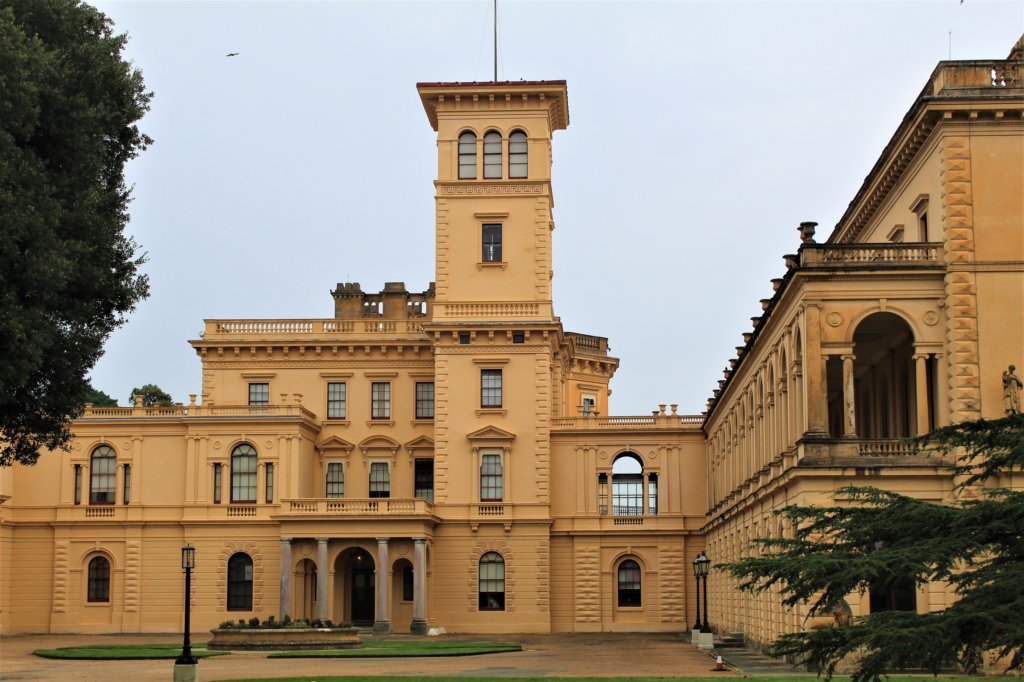
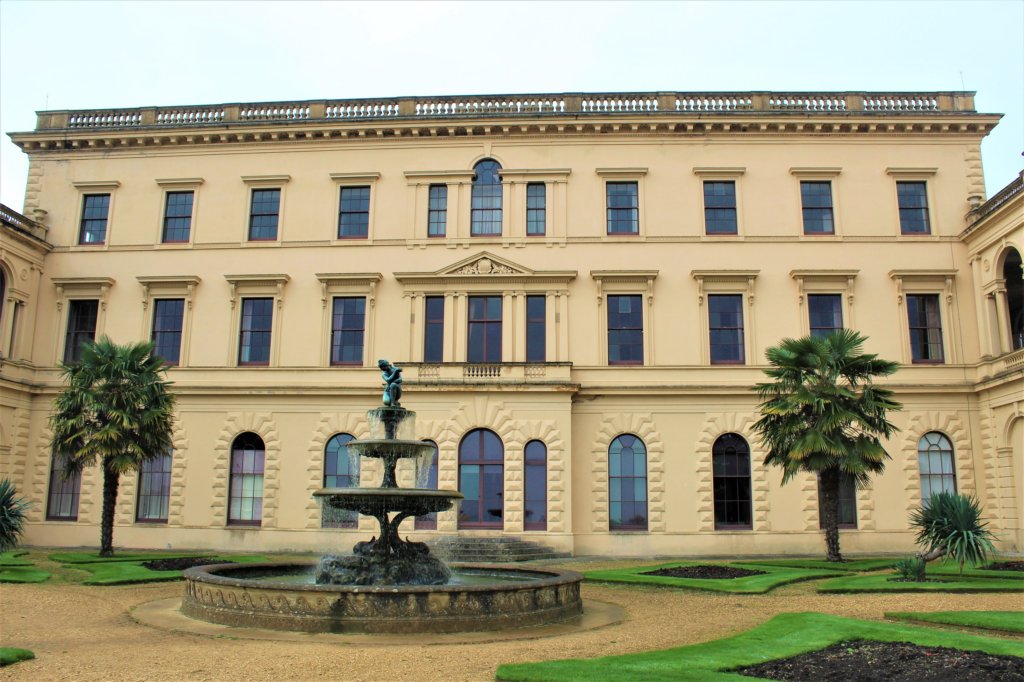
Essentials
Opening Times
- Daily 10am to 5pm
Prices
- Adults – £15.20
- Children (aged 5 – 17) – £9.10
- Students and over-65s – £13.70
- Family (2 adults and up to 3 children) – £39.50
- Family (1 adult and up to 3 children) – £24.30
- Engish Heritage Members – FREE
(Note – if you are planning to visit two or more English Heritage sites, annual membership often works out cheaper than buying individual entrance tickets.)
Highlights
There is plenty at Osborne House to keep you occupied all day, both in the grounds and in the house itself. These are some of my favourite things to see and do during your visit:
The Family Rooms
For me, the family rooms at Osborne House are a delight. Yes, they are plush, but you get a real sense of this house being used as a family home. Although Victoria died over a hundred years ago, it still feels as if she, her husband, and their children could walk through the door at any moment. It is well-documented how much Queen Victoria loved this place. In a letter written to her daughter in 1858, she complained about the gloominess of Windsor Castle and said, “I long for our cheerful and unpalace-like rooms at Osborne”.
The rooms still feel lived in. There are family portraits everywhere. The nursery is a joy. You can picture the royal princes and princesses having tea seated on their tiny chairs around the highly polished wooden table. It must have brought Victoria a lot of pleasure in later life to see her grandchildren occupying the same space and playing with the same toys that her children had. Victoria and Albert’s study with its matching desks where the royal couple worked side-by-side is especially poignant, as is the bedroom where Victoria died.
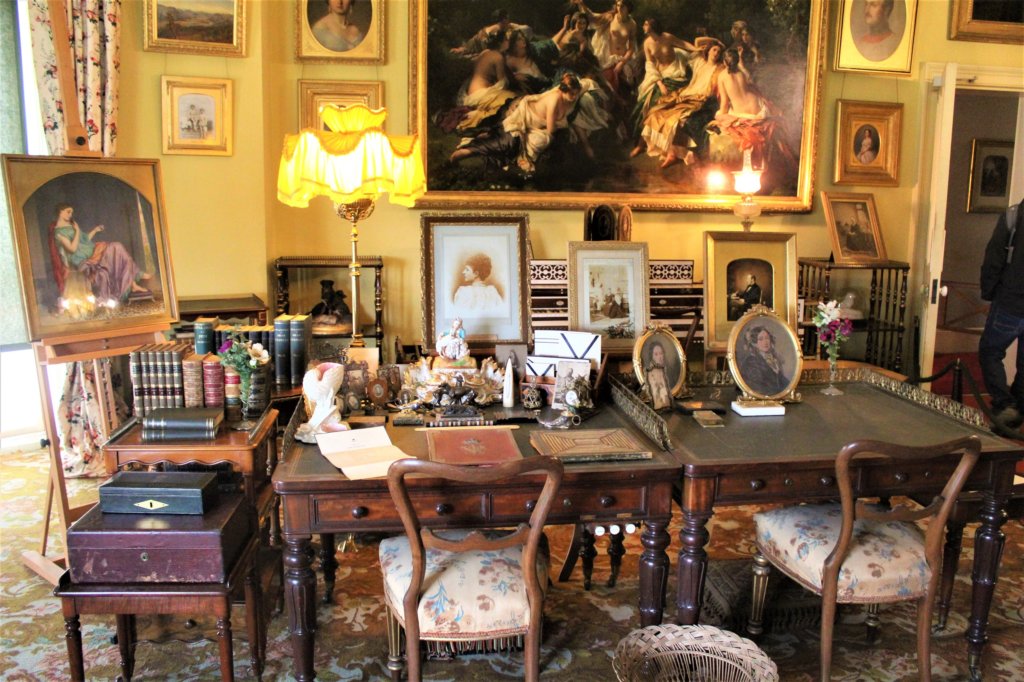
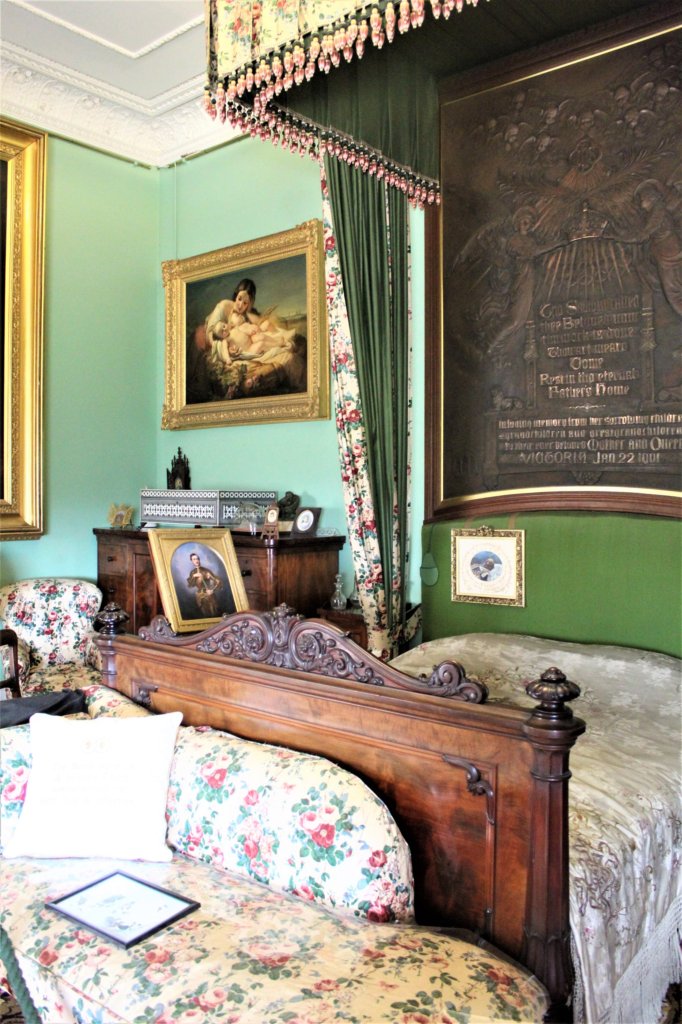
The State Rooms
Wandering through the opulent staterooms at Osborne House allows you to see where Queen Victoria and Prince Albert formally entertained guests during their reign. You will see the spectacular dining room and the drawing-room where foreign royalty were received on formal occasions. The queen also used this space to play cards, to sing, and to play the piano with members of the royal household after dinner. Next to the drawing-room is the billiard room with an impressive baize-covered table where the men could enjoy a game after dinner.
My absolute favourite of the staterooms though is the Durbar Room. This unique room was designed by Rudyard Kipling’s father, Lockwood Kipling, and master carver Bhai Ram Singh. It is detailed with intricate Indian-style plasterwork to reflect Queen Victoria’s status as Empress of India. The room is exquisite. It was the venue for ceremonial dinners for European royalty and the backdrop to Queen Victoria’s favourite theatrical entertainments when musicians would occupy the raised gallery.
The Durbar Room has made Osborne a popular venue for filming period pieces. Most recently, it featured in the 2017 film ‘Victoria and Abdul’ starring Dame Judi Dench and Ali Fazal. If you haven’t seen it, you should! It’s a great film, if somewhat surprising in parts!
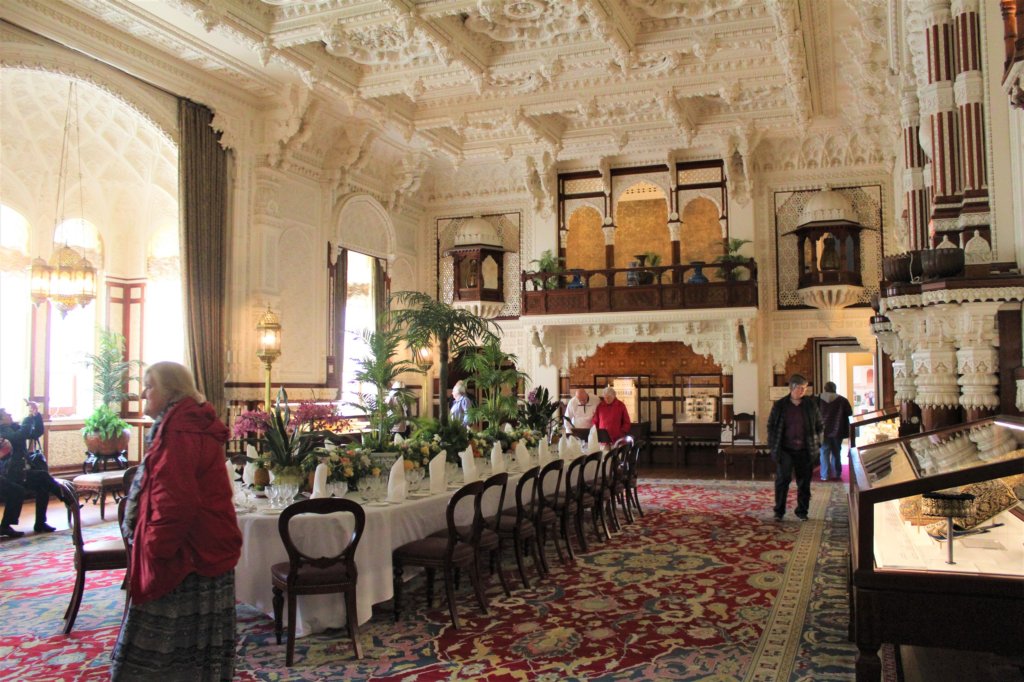
Swiss Cottage
I remember my first visit to Swiss Cottage as a child. I was fascinated and enchanted at this beautiful wooden two-storey chalet that Prince Albert had built for his children. In it, he had created a miniature world where everything worked. The princes and princesses learned to cook in the child-sized kitchen here using produce they had grown in their own vegetable patches in the garden outside. They enjoyed the ultimate ‘play house’ which put my little tent-like Wendy house to shame! I dreamt about it for months afterwards. I think it was the first time I felt real envy! 😊
Revisiting Swiss Cottage recently, I was still enraptured – as were my nieces!
The cottage is set well away from the main house. There is a minibus to take you there if you’re not up to the walk.
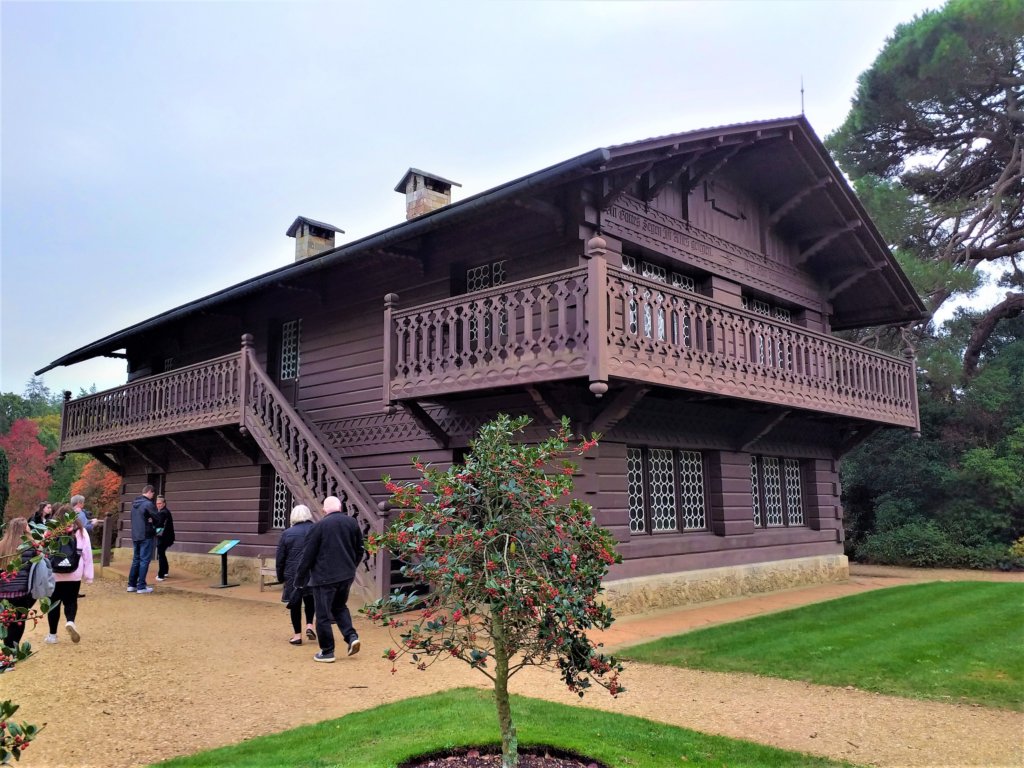
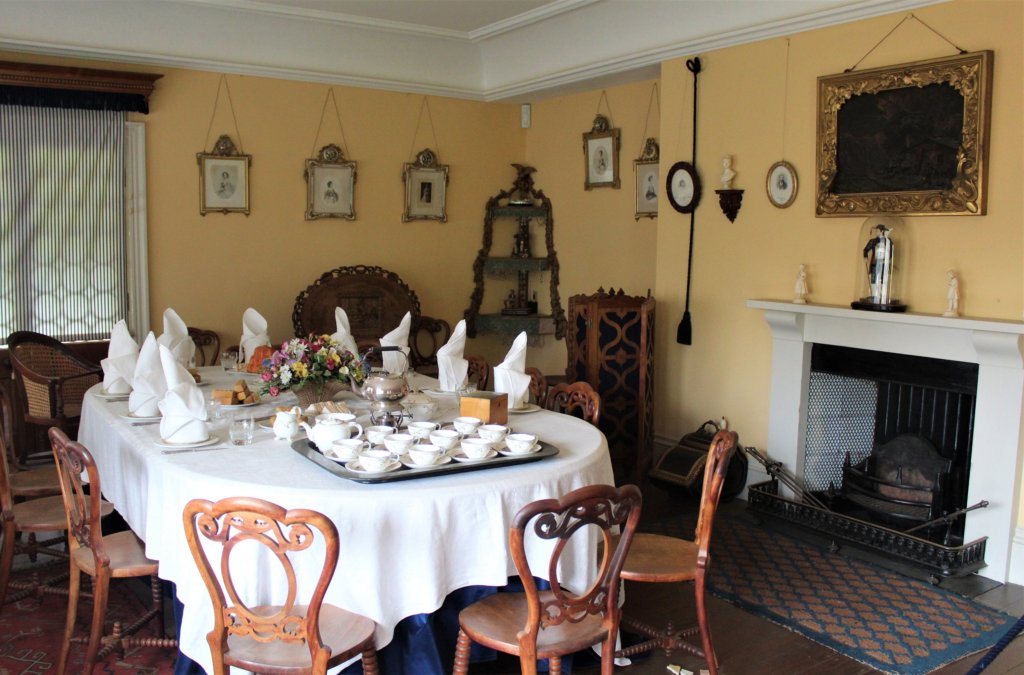
The Grounds
The gardens and grounds of Osborne House are a great place to walk and to relax. There are breathtaking views around every corner. The Mediterranean climate and clever planting scheme give a riot of colour all year round. Make sure you check out the ornate terrace gardens which were fully renovated in 2017 and the Victorian walled garden with its espaliered fruit trees. Many of the huge historic trees in the wider parkland of Osborne House were planted by Prince Albert himself.
Don’t miss Queen Victoria’s beach. The royal family spent many enjoyable hours here and it is where the princes and princesses learned to swim. Prince Albert believed in the health-giving properties of sea bathing and encouraged the queen and his children to do so. He installed a bathing machine by the shore so that Victoria could enjoy the waters with her modesty intact. This is now fully restored and open to visitors.
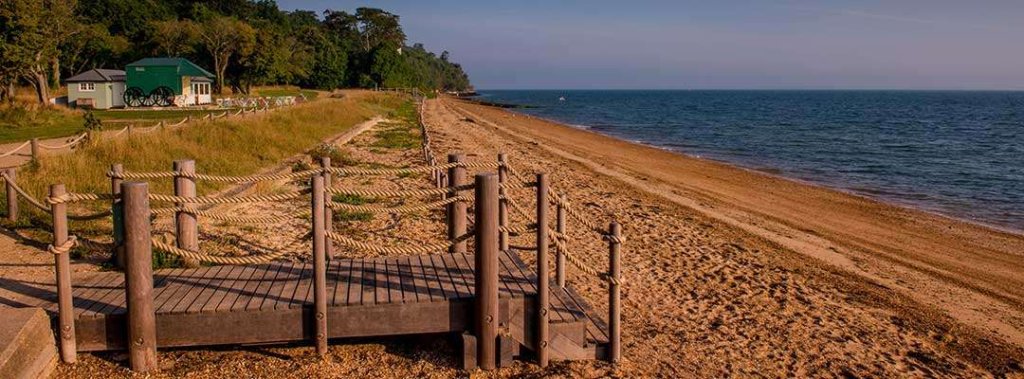
Spend the Day at the Needles
Another of the interesting things to do on the Isle of Wight is to visit The Needles, a row of three stacks of chalk that rise about 30m out of the sea off the western extremity of the island close to Alum Bay. There is a lighthouse on the furthest stack. The image of the rocks and the lighthouse has become the iconic picture of the Isle of Wight, featuring on all manner of souvenirs from tea towels and mugs to fridge magnets and car stickers.
Alum Bay is famous for its extraordinary coloured sands which can be clearly seen in the cliff face that drops down to the beach.
It is possible to visit the beach via a wooden stairway and view the Needles for free, but, as you might expect, a huge tourist attraction has been built around this natural phenomenon.
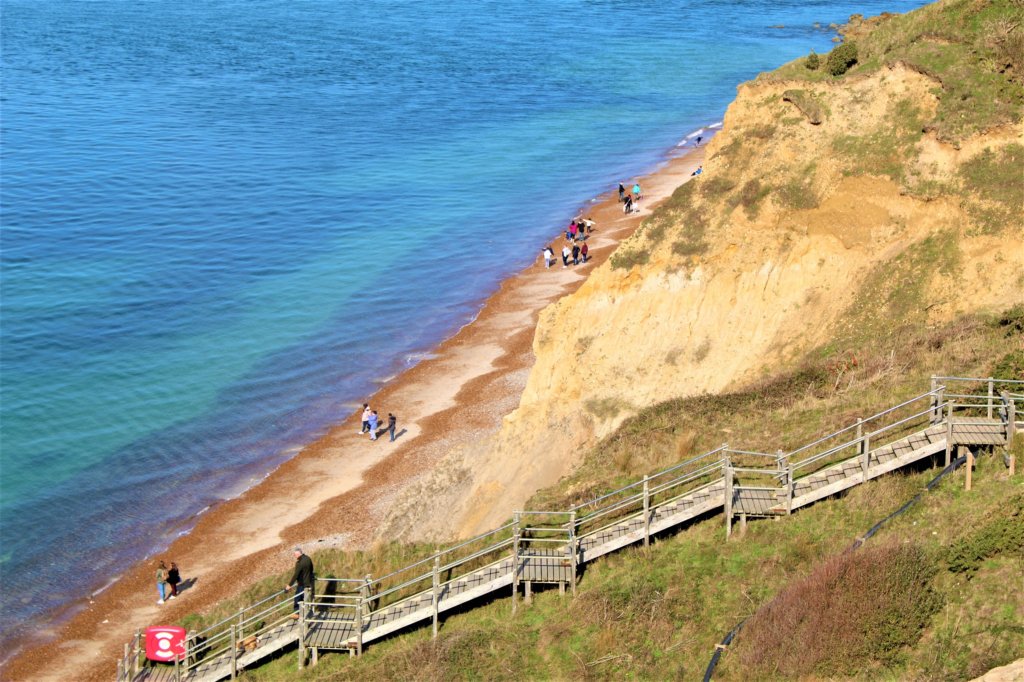
The Needles Landmark Attraction

The Needles Landmark Attraction is open every day from 10am to 5pm (weather permitting) and offers a range of activities and rides at the top of the cliffs. These include fairground rides, crazy golf, glass-blowing demonstrations, food and drink tastings, sweet-making shows, slot machines, shops, restaurants, open-top bus rides, and a studio where you can fill your own glass ornament with layers of coloured sand collected from the bay. (The ‘harvesting’ of sand is strictly regulated – it is forbidden for individuals to take anything away from the beach.)
There is also a chairlift to take you down to the beach if you don’t fancy tackling the large number of steps.
All of these attractions can be paid for individually whilst you are on site. There is, however, an opportunity to buy ‘supersaver tickets’ online in advance. These can be used for all of the rides and demonstrations as well as for the chairlift. They will save you 25% on the cost of individual tickets. It is worth doing even if, like us, you only intend to go on the chairlift.
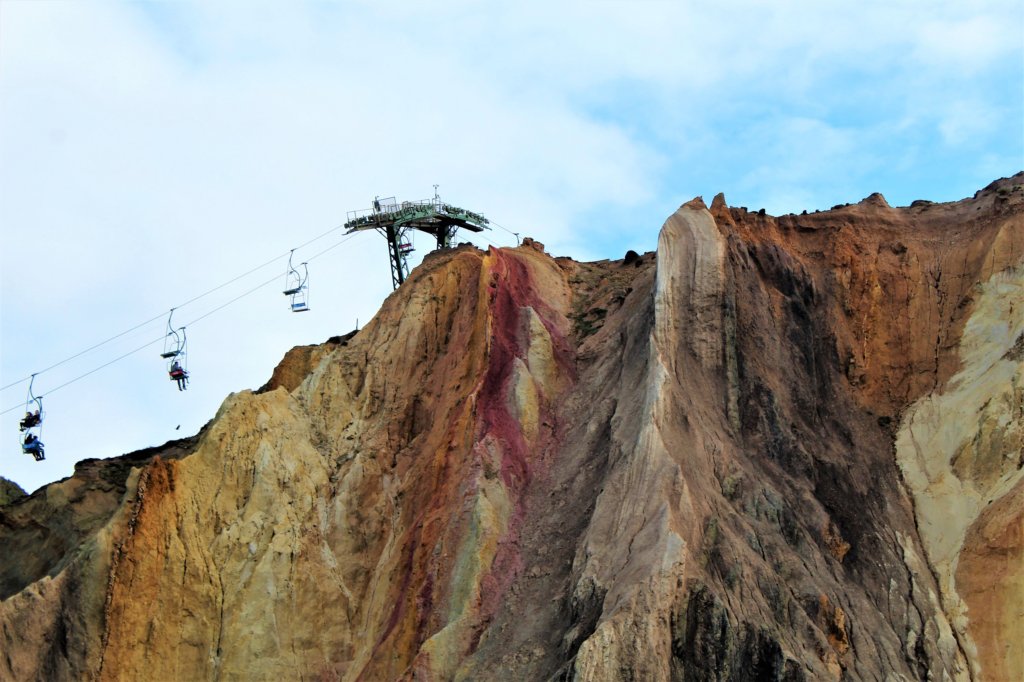
Boat Rides
From the beach, you can take a boat ride to get a closer look at the Needles and the lighthouse. The boats operate from Easter to October every day from 10.30am. They don’t run in bad weather. You can choose between a 20-minute slow cruise on the Yarmouth Rose (£7 for adults/£4 for children) or a 15-minute fast trip on one of the High-Speed Ribs (£12.50 per person, or £45 for a family of 4 (2 Adults and 2 children under 15)).
We chose the slower option which gave us some great opportunities to take photos.
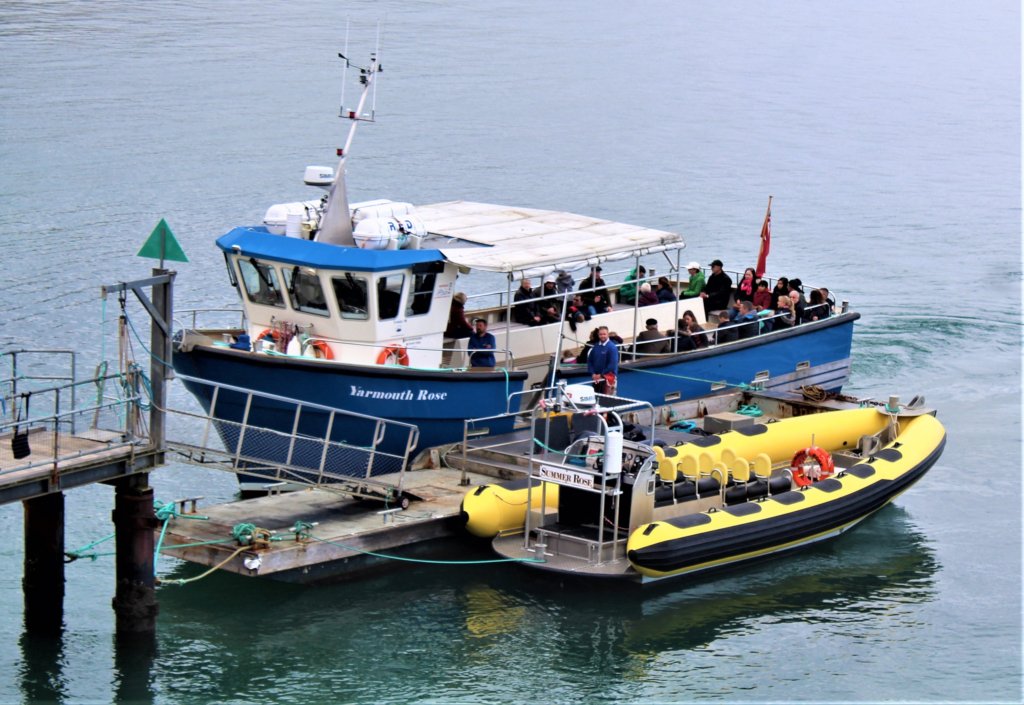
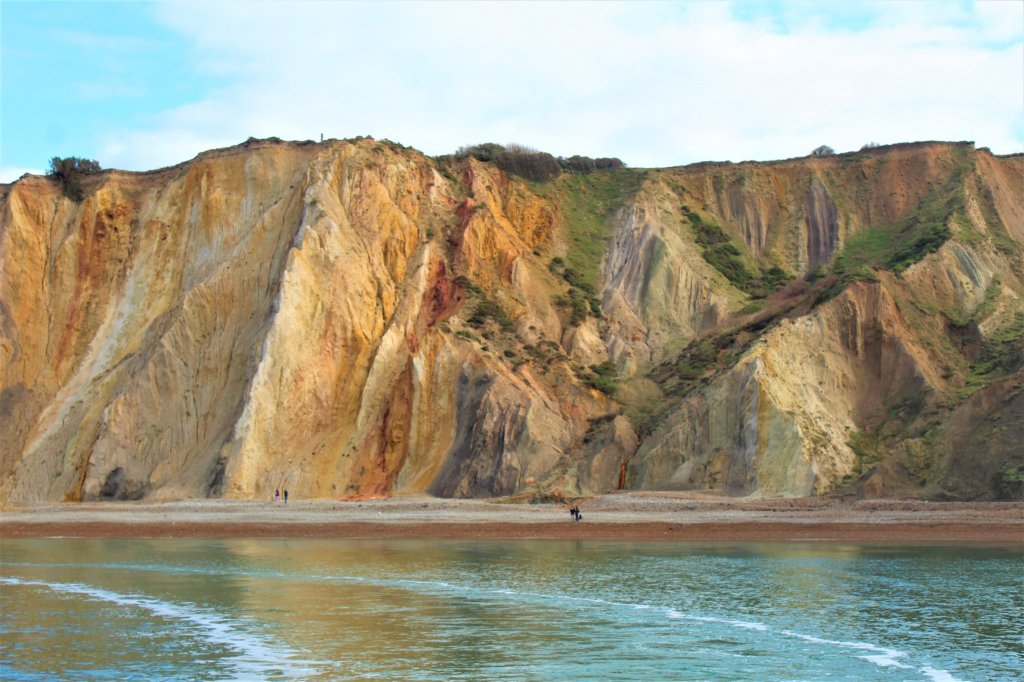
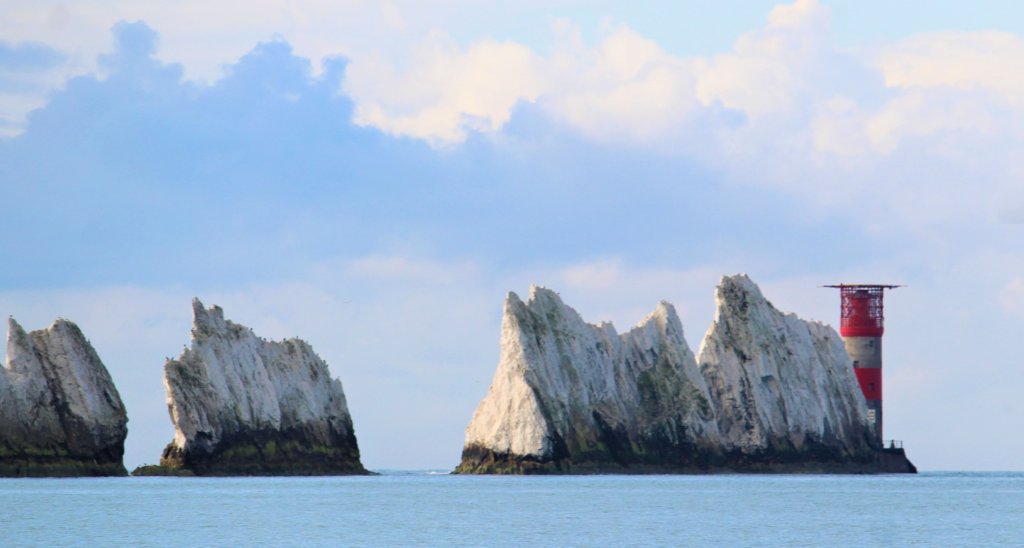
The Needles Batteries
Whilst you are visiting the Needles, don’t miss the opportunity to explore the two gun batteries and the experimental rocket testing station on the headland. For military buffs, this is one of the best things to do on the Isle of Wight. You can walk up there or catch one of the regular open-top buses.

The batteries were built above the Needles stacks to defend the West end of the Solent against enemy ships.
The Old Battery was constructed between 1861 and 1863. Today, it houses interesting exhibitions about the second world war, including the role of women in wartime and a genuine Anderson shelter erected in the courtyard. You can descend a narrow spiral staircase to explore a tunnel leading to a searchlight emplacement with good views of the Needles lighthouse.
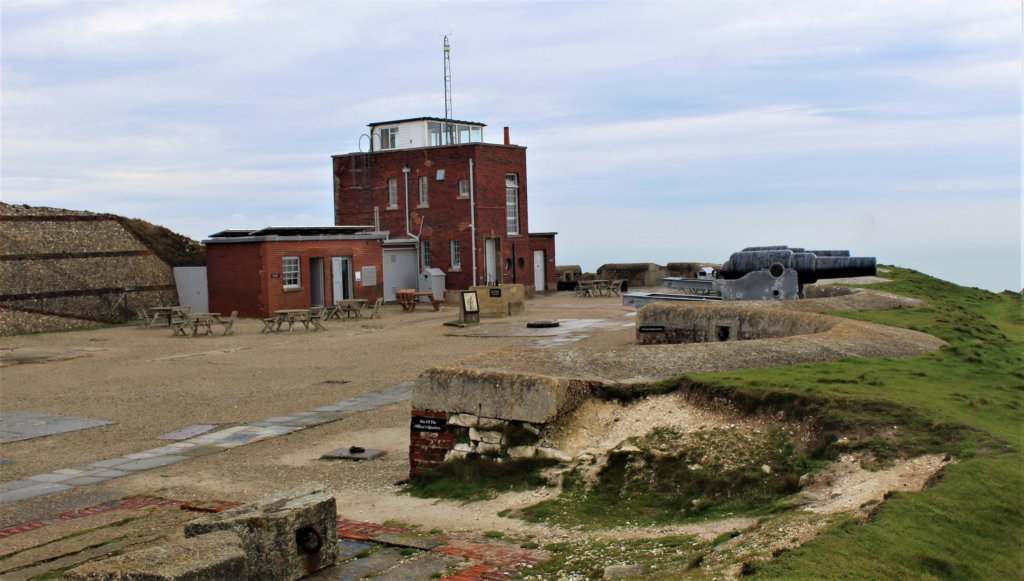
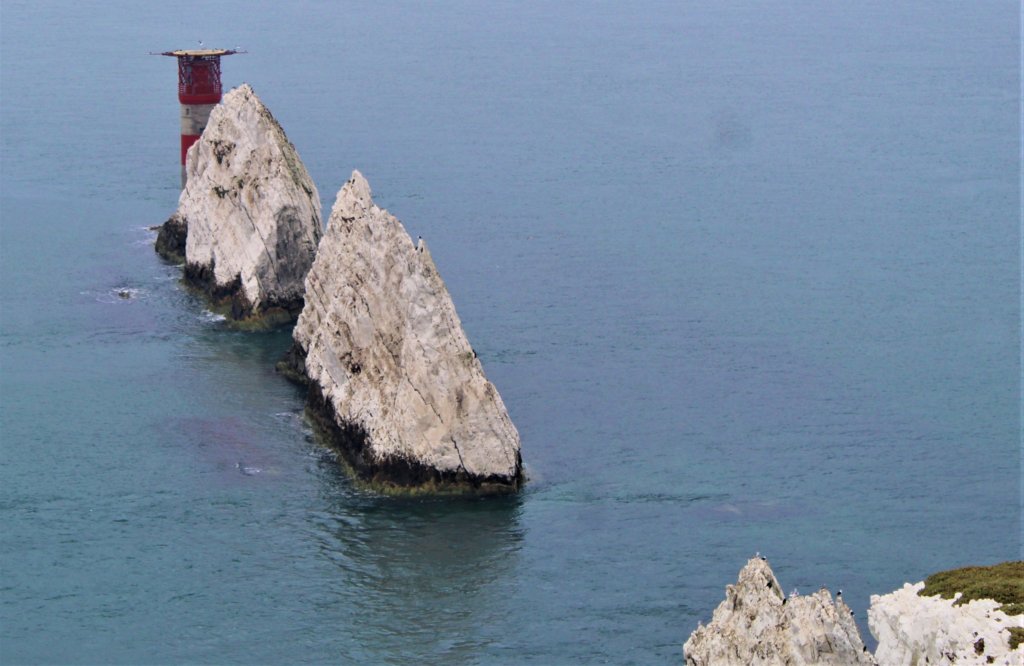
Subsidence problems and concerns that the vibrations from firing the guns were causing the cliffs to crumble led to the New Battery being built higher up the cliff in 1895.
Both batteries were manned during both world wars. They were decommissioned when World War II ended in 1945, but then in the 1950s, the New Battery was used for testing the Blue Streak missile, as well as the Black Knight and Black Arrow satellite launch vehicles.
Now, the sites are managed by the National Trust and are open daily from mid-March to the end of October. Admission costs £7.45 for adults, £3.70 for children, and £18.60 for a family. It is free for National Trust members.
Explore Carisbrooke Castle
Carisbrooke Castle is a historic motte-and-bailey castle first built over 1000 years ago. Today, a visit to this quintessential romantic castle is one of the ‘must-do’ things to do on the Isle of Wight. It is managed and maintained by English Heritage. As you wander around, you will be reminded of periods of dark history as well as happier times when the castle was a family home. Charles I was imprisoned here in the months prior to his trial.
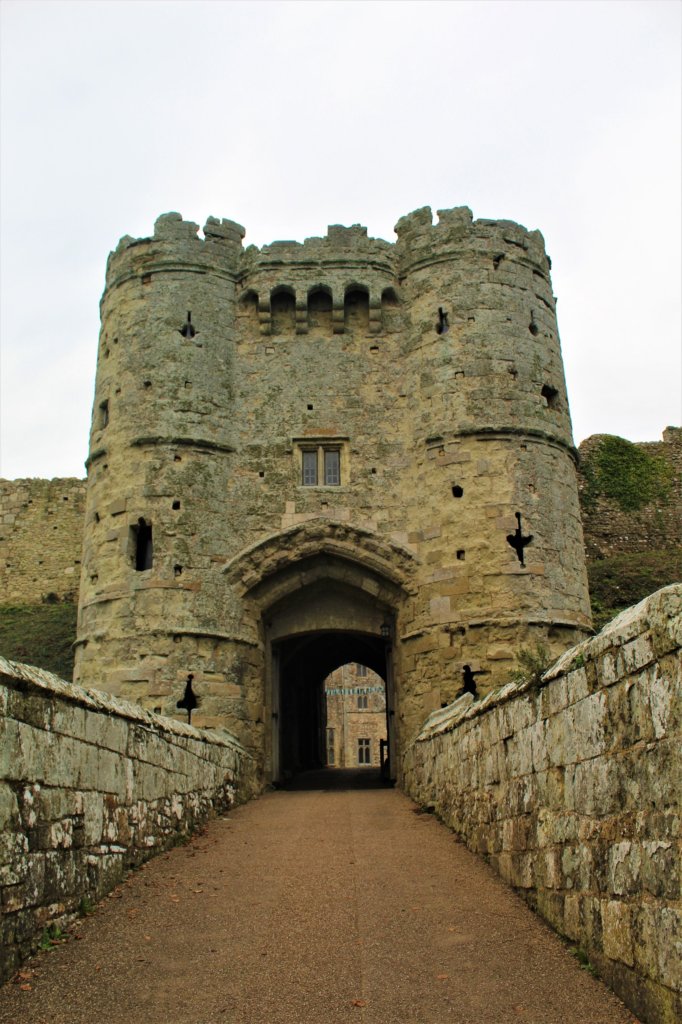
Essentials
Opening Times
- Daily 10am to 5pm
Prices
- Adults – £11.30
- Children (aged 5 – 17) – £6.80
- Students and over-65s – £11.20
- Family (2 adults and up to 3 children) – £29.40
- Family (1 adult and up to 3 children) – £18.10
- Engish Heritage Members – FREE
(Note – if you are planning to visit Osborne House (see above) and Carisbrooke Castle, annual membership of English Heritage could work out cheaper than buying individual entrance tickets.)
Highlights
The Norman Keep and Ancient Walls
Climb the steep steps up the massive castle mound to enjoy unrivalled birds-eye views from the ancient castle keep. The earthworks and keep were begun around 1100 when the whole of the Isle of Wight was granted to the de Redvers family.
You can walk right around the castle on the battlements and see across the island in all directions.
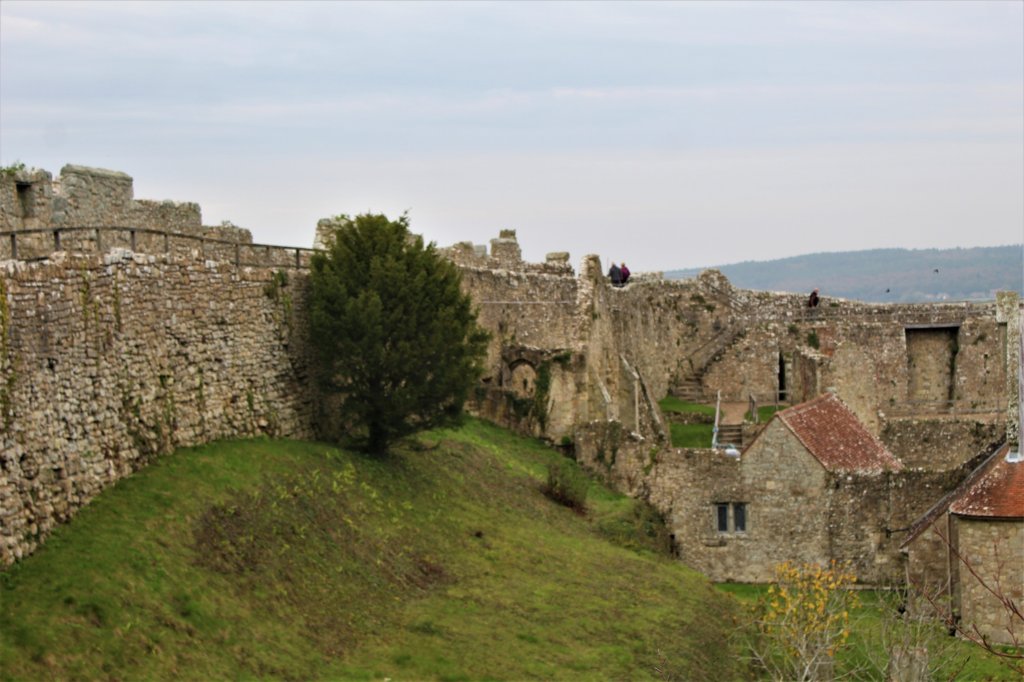
Princess Beatrice Garden
Queen Victoria’s youngest daughter, Beatrice, became governor of the Isle of Wight in 1896 and took up residence in Carisbrooke Castle. She remained there until her death in 1944.
The walled garden at the castle became her ‘privy’ garden where she could retreat from the world and enjoy some peace. It was fully restored in 2009 by TV gardener Chris Beardshaw. He chose plants to echo Princess Beatrice’s blue, red and gold heraldic crest, and the layout reflects architectural details on the adjoining Chapel of St Nicholas.
The Carisbrooke Castle Museum
The museum is housed in the castle’s Great Hall, St Peter’s Chapel and Constables’ Lodging. It is full of Charles I memorabilia and hosts regularly changing local history exhibitions.
St Nicholas’ Chapel
The current chapel was built in 1904 to commemorate the 250th anniversary of Charles I’s execution, though there had been a chapel at the castle since medieval times. Princess Beatrice commissioned the altar painting following the death of her youngest son, Maurice, at Ypres. Afterwards, the chapel became a war memorial to commemorate all those Isle of Wight citizens who died in both world wars.
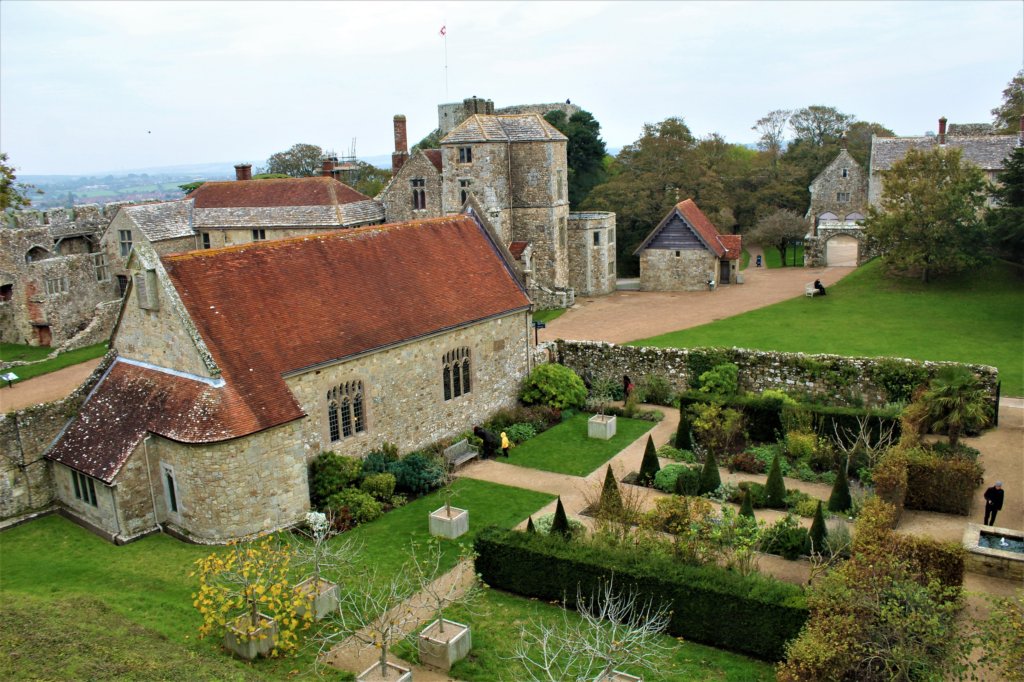
Carisbrooke Castle Donkeys
The well-house at Carisbrooke was once the main supply of water for the castle. It was constructed in the 1580s. A huge oak wheel would be turned to drop a bucket down to the water and back up again. For one bucket, the wheel had to be turned 255 metres. This job was originally done by prisoners. In 1696, the prisoners were replaced by donkeys.
Today, castle donkeys provide demonstrations for visitors every day. They are treated much better than their predecessors ever were. They only do 30 seconds of work twice a day. For the rest of the time, they have comfortable stables and a five-acre field to graze in.
Traditionally, Carisbrooke donkeys have always had names beginning with ‘J’. The current team are Jack, Jill, Jigsaw, and Juno.
Enjoy a Ride on the Isle of Wight Steam Railway
Everyone loves a steam train, don’t they? I know I do! The Isle of Wight Steam Railway is a labour of love for a team of passionate rail enthusiasts. They have recreated a bygone age with shiny restored engines, comfortable carriages, well-kept stations, staff in authentic period costumes, and tons of nostalgic memorabilia to trigger memories and provoke stories. Even on a wet day, as it was when we last went on it, a ride on one of these trains is a joy – definitely not to be missed off your list of things to do on the Isle of Wight.
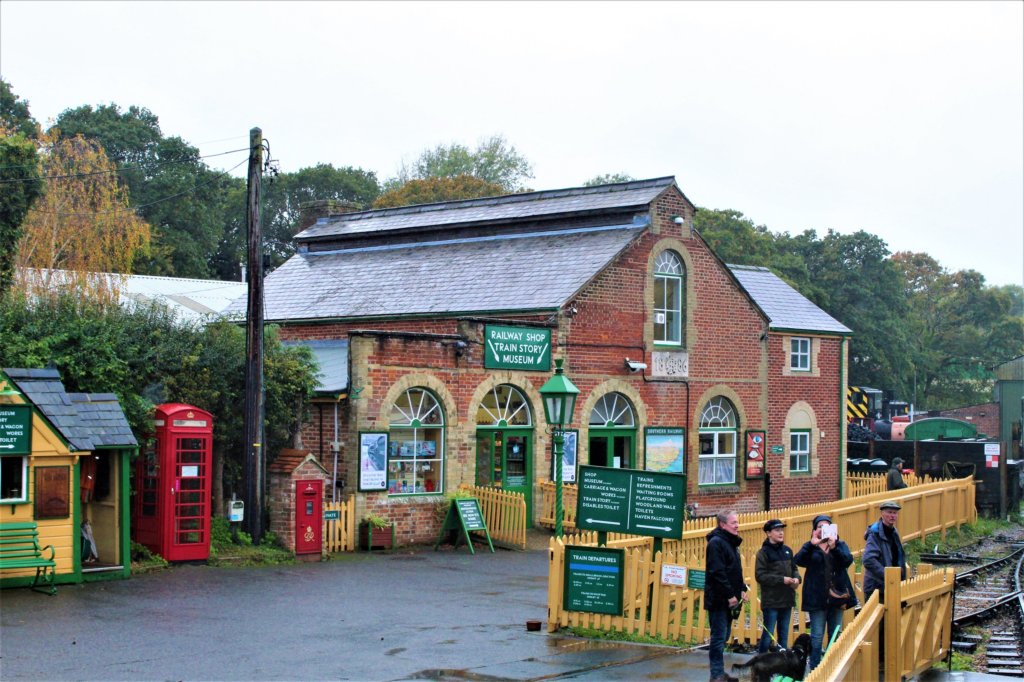
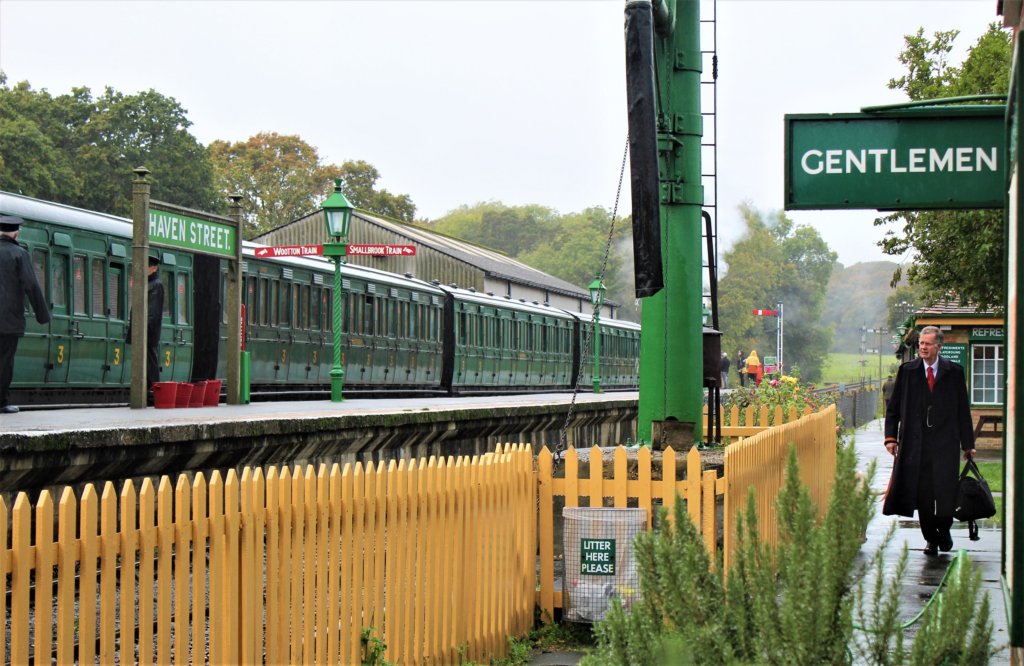
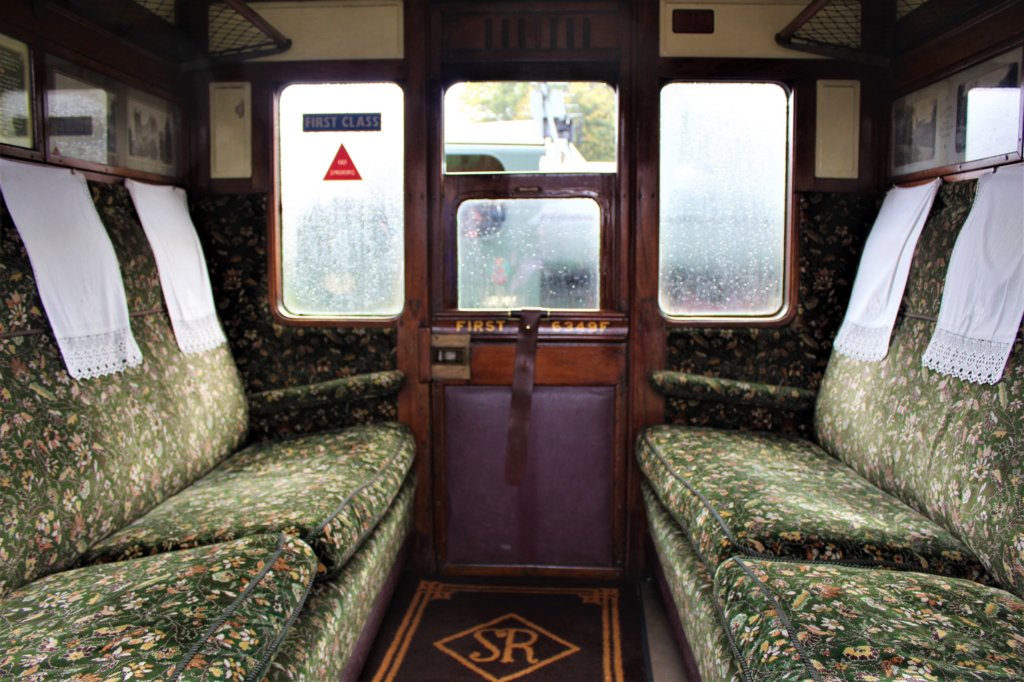
The railway passes through 5¹⁄₂ miles of countryside from Smallbrook Junction to Wootton station, via the small village of Havenstreet, where the line has a station, headquarters and a depot. Visits begin and end at Havenstreet. Tickets include a round-trip train ride and entry to Havenstreet Station where you can visit the very interesting ‘Train Story Discovery Centre’ and see volunteers hard at work restoring the rolling stock.
The cost is £15.50 for adults, £7,50 for children (under 5s go free), or £38 for a family of two adults and two children. It is a little cheaper if you buy tickets online in advance. Check out the railway’s fantastic website for a full timetable and details of special events.
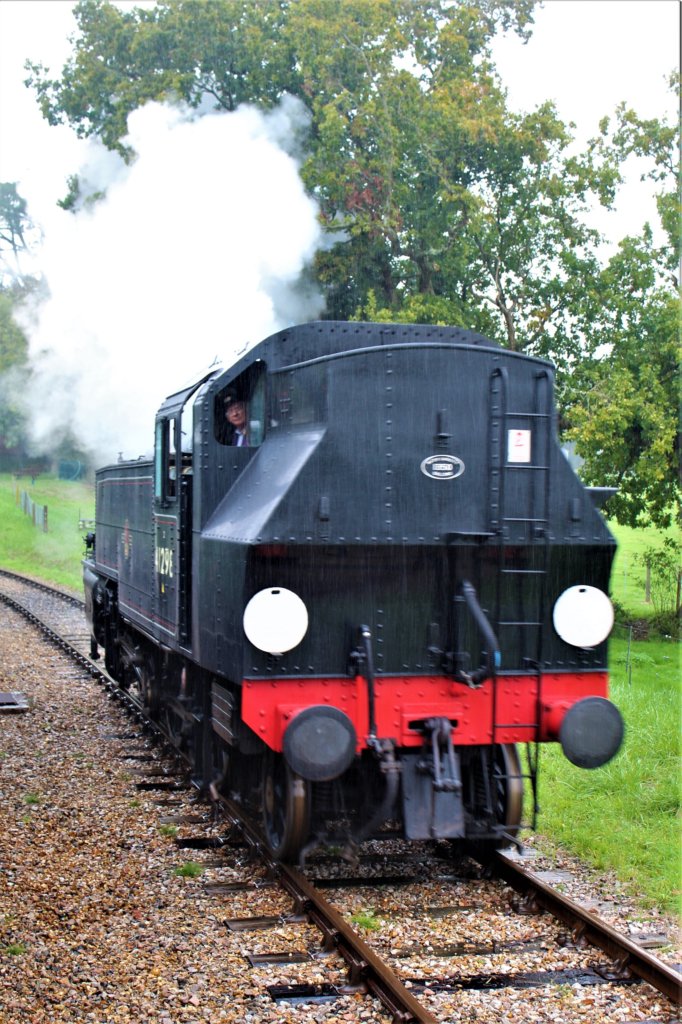
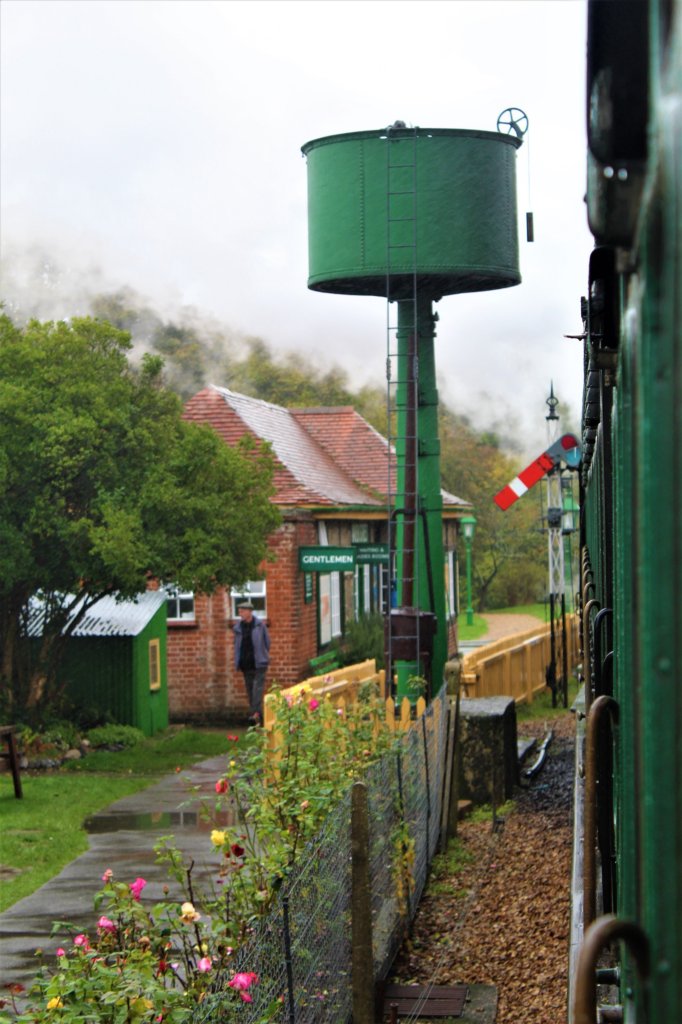
Marvel at Godshill Model Village
No, it’s not just for children! I loved the model village when I first visited it as a child and I still love it now. The models have been built to such a high standard that you’ll be blown away by the detail. Wander around the real village of Godshill first with its quaint thatched cottages and ancient church, and then go and explore the miniature version. Look out for the model of the model village as well as the model of the model of the model village! 😂
The attraction is open from 10am to 5pm every day. Entrance tickets cost £5.95 for adults, £5,25 for children aged 3 to 16, £5.50 for seniors and students, and £21 for a family of 2 adults and up to 3 children.
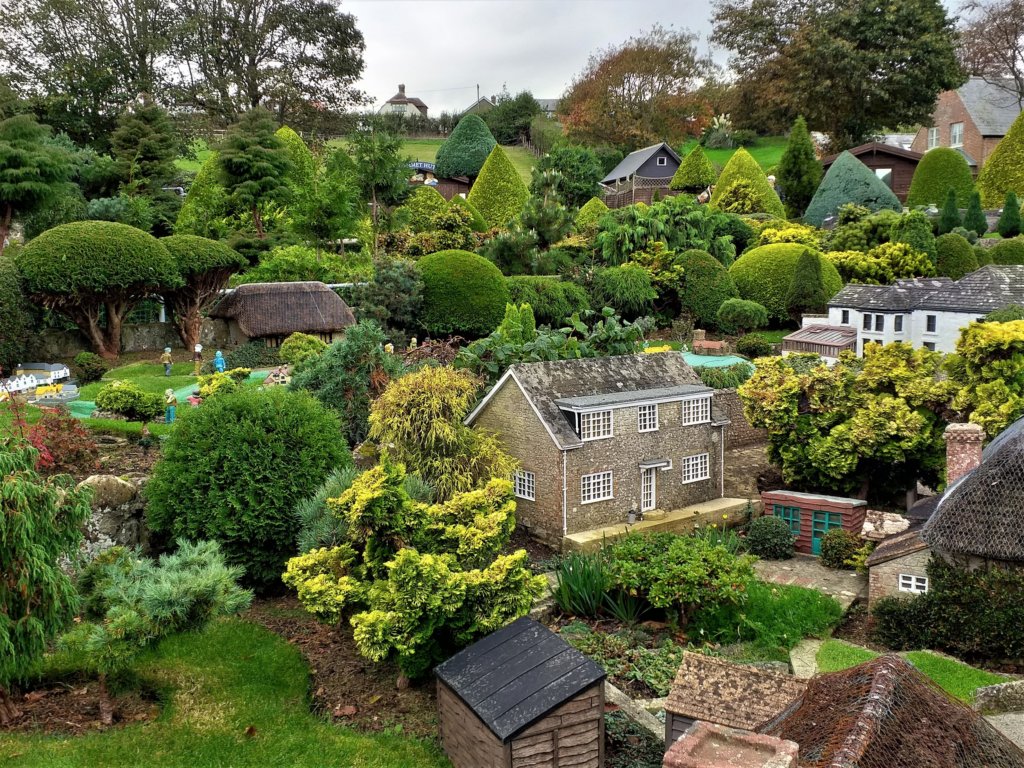
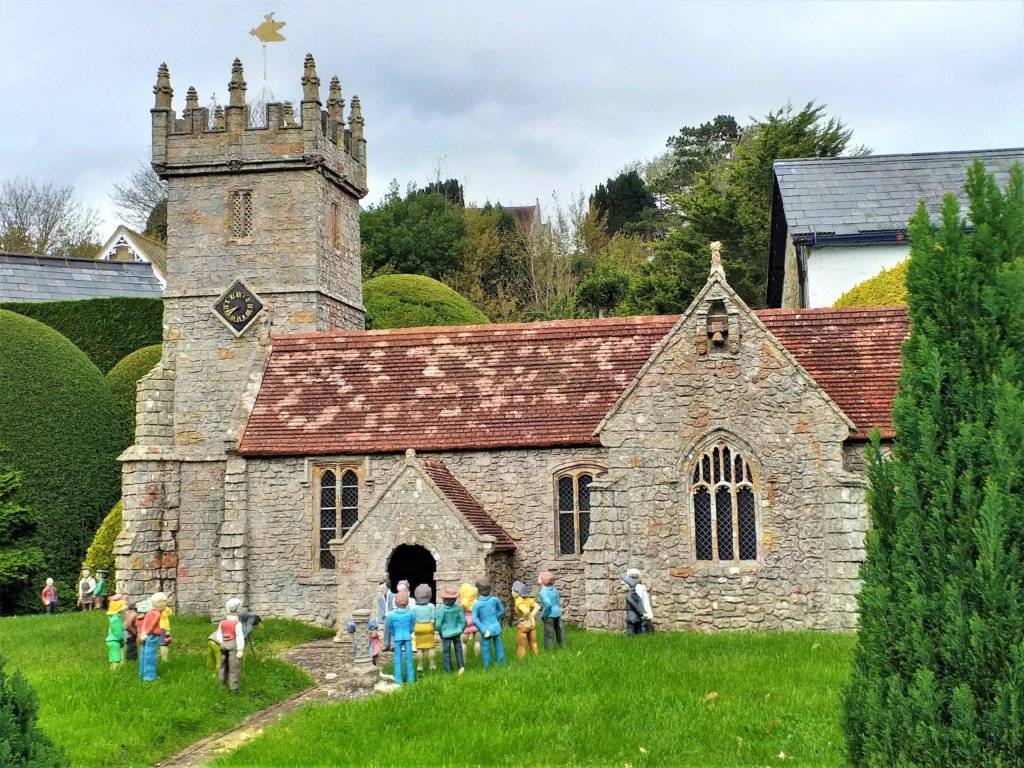
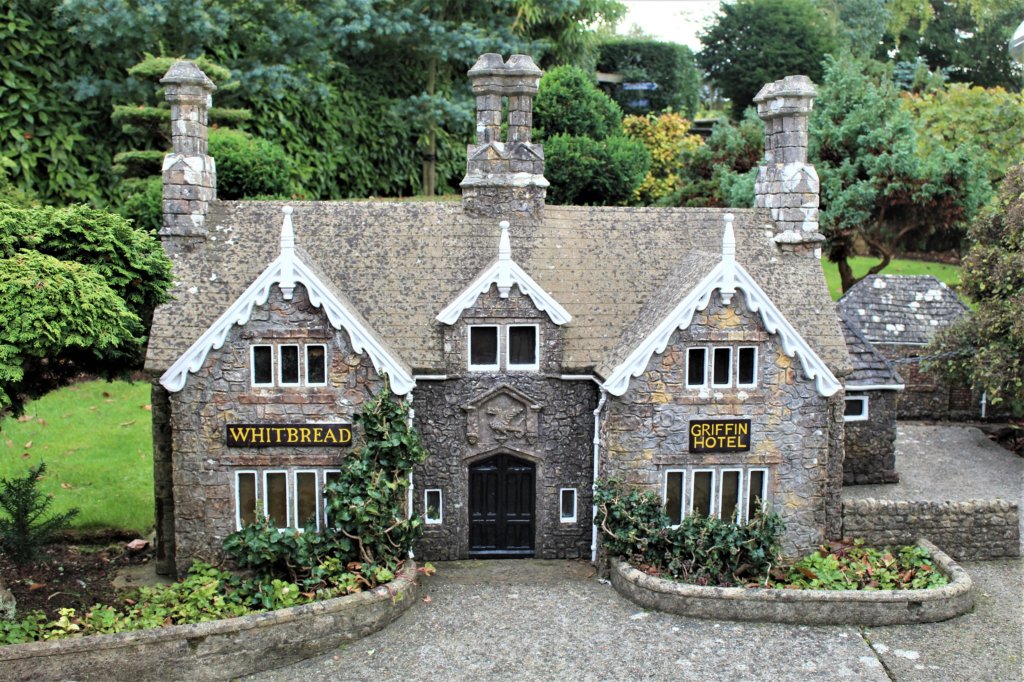
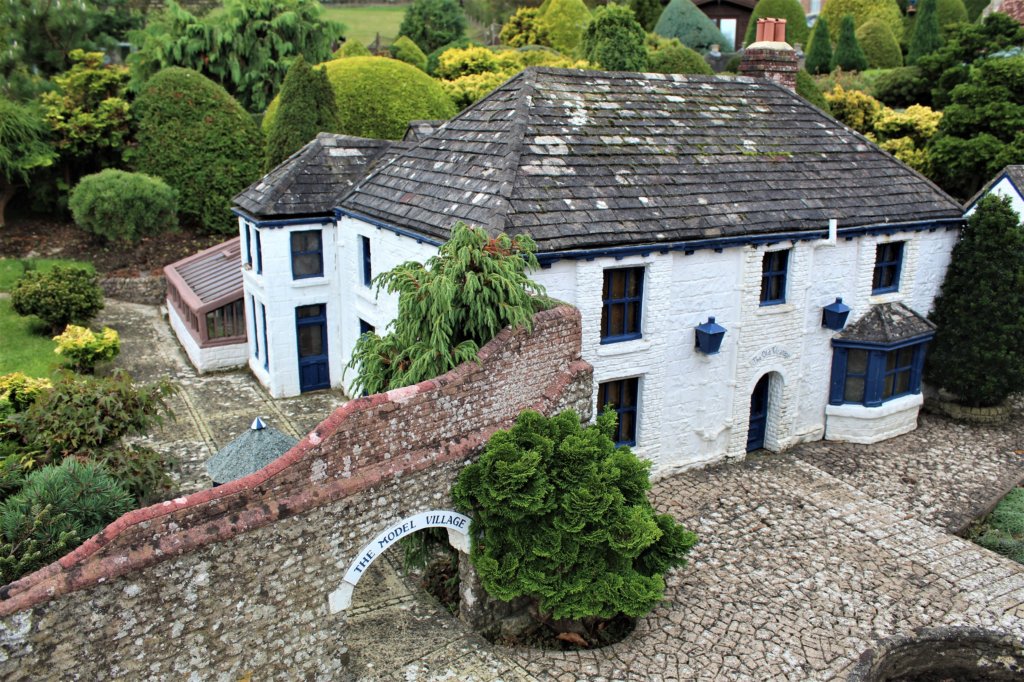
Find Peace at Quarr Abbey
In all the many, many visits I have made to the Isle of Wight, I had never ventured to Quarr Abbey. We put this right on our last trip. We were too early for our ferry back to Portsmouth so we spent a couple of hours enjoying the calm of this Benedictine monastery.
The monks who live here live a life of prayer and work. Visitors are welcome to walk around the grounds and the church. There is a tearoom, a farm shop, and an art gallery. There is no charge to enter, although donations are gratefully accepted.
There has been a house of prayer of one kind or another on the site since 1132. The impressive buildings you see today were constructed in 1907.
For further information about the abbey and its work, visit their comprehensive website.
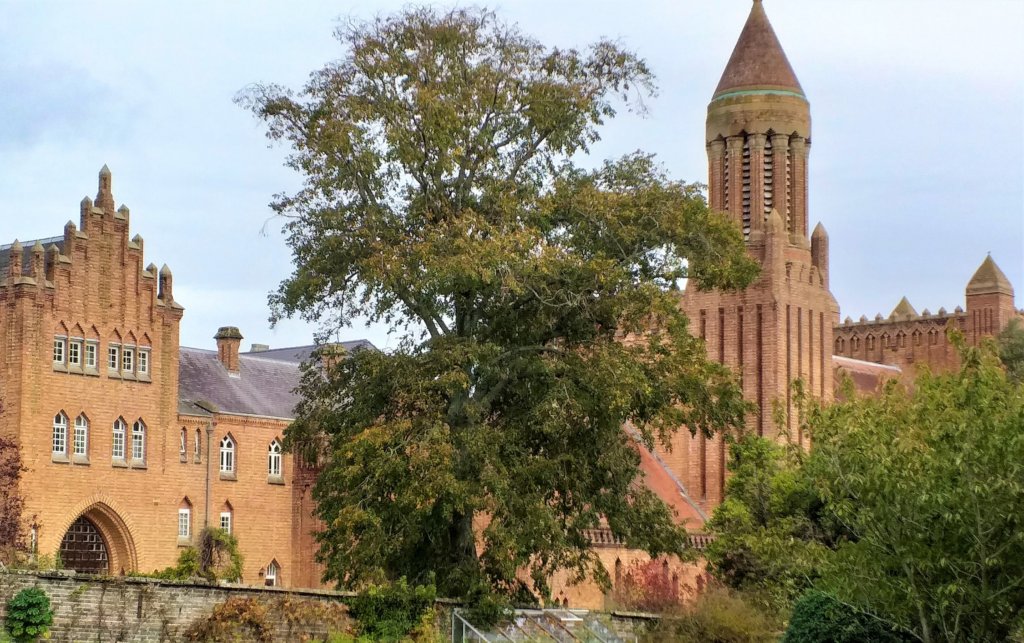
Walk to the Pub!
With over 500 miles of footpaths and 165 miles of bridleways to explore, you will never run out of places to walk on the Isle of Wight! It’s one of the joys of any visit to the island. There’s nothing better than wandering through verdant countryside or walking along sandy beaches. You will often have an entire vast landscape all to yourself. Get fit, get back to nature, and always remember that you’re never far from a really good pub!
The island has more than its share of friendly, traditional watering holes, most of which serve great food. I’m speaking from experience here! Getting my father-in-law to come for a walk with us was dependent on us being able to assure him that we would end up at a pub for a pint, a whisky, and a sandwich!
Final Words
There are plenty of other things to do on the Isle of Wight that I haven’t talked about in this article. If you have children with you, check out this post which is full of family-friendly activities. Every June, The Isle of Wight Festival takes place. Top class musical acts entertain the crowds over three days. If you are on the island in August, don’t miss Cowes Week, a fabulous sailing regatta that attracts racing boats from all over the world.
Read More About the Isle of Wight
If you like what you’ve read, PIN IT!!



If you’re travelling soon, please use these links!
Are you travelling soon? Use these links when making your bookings. These are the companies we use. It won’t cost you any extra, but we will earn a few pennies to help keep Happy Days Travel Blog going. Thank you!!
- Book your travel insurance with World Nomads (Never leave home without protecting yourself, your trip and your belongings!)
- Book your flight with Skyscanner
- Book your accommodation with Booking.com
- Book a tour with Tour Radar or Intrepid Travel
- Book city tours and activities with Get Your Guide
Disclosure: This post contains affiliate links. If you click through for more information, or to make a purchase, it may result in a small commission coming my way. Please note that there is no extra cost to you associated with this. Thank you so much for supporting my site.
Join our mailing list

Sign up to receive our monthly newsletter. Keep up with what we're doing and be the first to receive special offers and insider tips.



